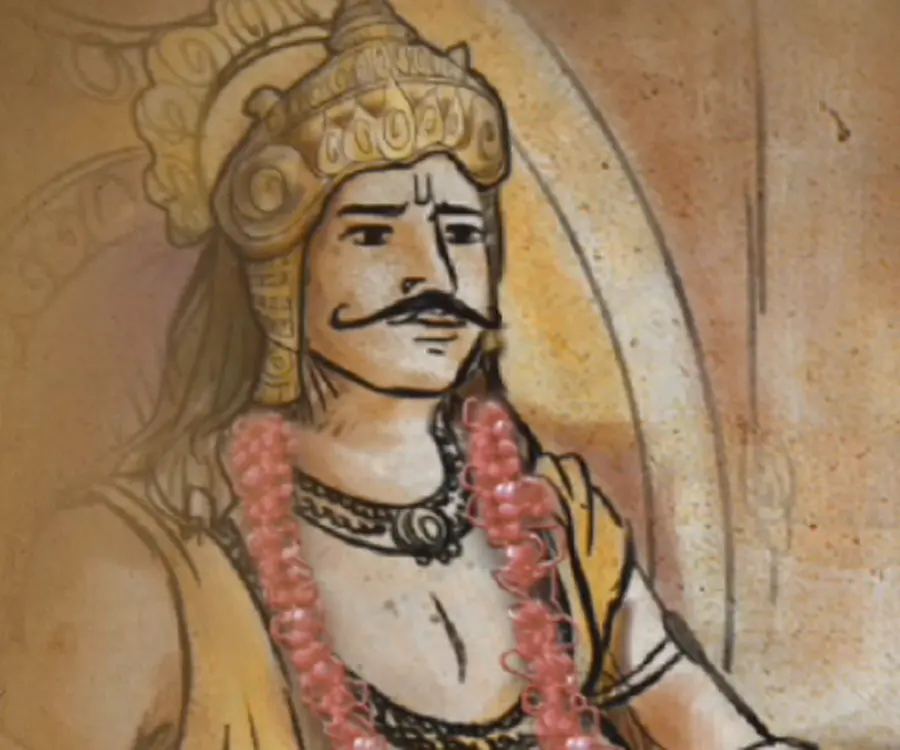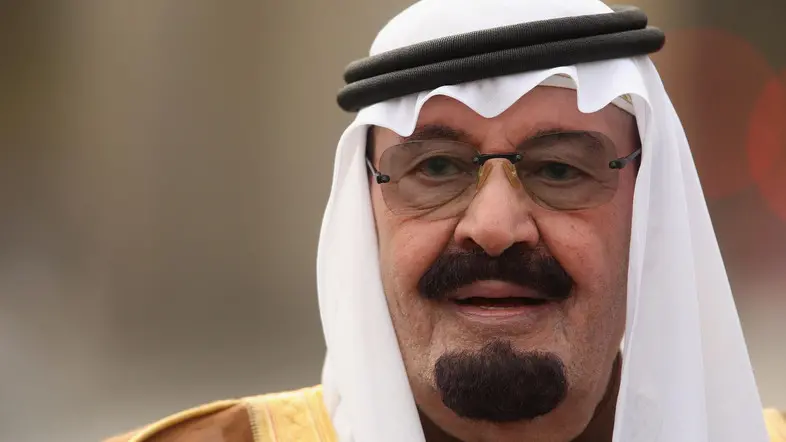
Harshavardhana - Kings, Family and Family
Harshavardhana's Personal Details
Harshavardhana was an Indian emperor who ruled over a large empire in northern India from 606 to 647
| Information | Detail |
|---|---|
| Birthday | 590 |
| Died on | January 1, 647 |
| Nationality | Indian |
| Famous | Historical Personalities, Emperors & Kings, Leaders, Emperors, Kings |
| Spouses | Durgavati |
| Childrens | Vagyavardhana and Kalyanvardhana |
| Religion | Buddhism |
| Gender | Male |
| Famous as | Indian emperor |
| Died at Age | 57 |
// Famous Emperors
Sundiata Keita
Sundiata Keita was the founder of the Mali Empire in West Africa. This biography profiles his childhood, early life, struggles, founding of empire, rule, administration, achievements and also gives some fun facts.
Ashoka
Ashoka was the third emperor of the Mauryan Dynasty and ruled almost the entire Indian subcontinent. This biography profiles his childhood, life, reign, achievements and timeline
Murad IV
Murad IV was one of the mighty Sultans in the history of the Ottoman Empire. This biography profiles his childhood, family, accession, rule, administration and timeline.
Harshavardhana's photo
Who is Harshavardhana?
Harshavardhana, also known as Harsha, was an Indian emperor who ruled over a large empire in northern India from 606 to 647. The second son of Prabhakarvardhana, he hailed from the Pushyabhuti Dynasty. After the death of his father, his elder brother Rajyavardhana took over the reins of the kingdom. However, Rajyavardhana too died, most probably killed by Shashanka, the ruler of the Gauda kingdom following which the young Harsha came to power. After the downfall of the Gupta Empire in the middle of the 6th century, Northern India had fallen apart to small republics and minor states. After ascending the throne Harsha united the small republics from Punjab to central India, to create a vast unified empire. Under his rule, the empire underwent considerable expansion and grew to include the Punjab, Rajasthan, Gujarat, Bengal, Odisha and the entire Indo-Gangetic plain north of the Narmada River. He proved himself to be an able administrator and presided over a kingdom where peace and prosperity prevailed for most of the time. He had an intellectual bent of mind and his court was a hub of artistic activities. Harsha himself was a Mahayana Buddhist and was tolerant towards all Indic faiths.
// Famous Kings
Sundiata Keita
Sundiata Keita was the founder of the Mali Empire in West Africa. This biography profiles his childhood, early life, struggles, founding of empire, rule, administration, achievements and also gives some fun facts.
Ashoka
Ashoka was the third emperor of the Mauryan Dynasty and ruled almost the entire Indian subcontinent. This biography profiles his childhood, life, reign, achievements and timeline
Murad IV
Murad IV was one of the mighty Sultans in the history of the Ottoman Empire. This biography profiles his childhood, family, accession, rule, administration and timeline.
Childhood & Early Life
Harshavardhana was born in c.590 as the second son of Prabakaravardhana, the first important king of Pushyabhuti dynasty and his queen, Yasomati. He had one elder brother, Rajyavardhana and one sister, Rajyashri, who later married Grahavarman, a member of the Maukhari, ruling family at Kannauj.
After the death of his father, his elder brother Rajyavardhana ascended the throne.
His sister’s husband, Grahavarman, was killed by the ruler of the Malava kingdom, who also kidnapped Rajyashri. Rajyavardhana marched against the Malava king and defeated him. However, he was treacherously killed by Shashanka, ruler of the Gauda kingdom.
Ascension & Reign
Harshavardhana, aged just 16 at the time of his brother death in 606 was crowned the king. He decided to avenge his brother’s death and made an alliance with King Bhaskaravarman of Kamarupa and warred against King Shashanka of Gauda. He was ultimately successful in rescuing his sister who was about to commit suicide after escaping from the Malava king though he could not defeat Shashanka.
Since his brother-in-law Grahavarman left behind no male heirs, he declared himself sovereign ruler of Kannauj and transferred his capital to that city.
Over a period of time he was able to successfully add regions of Punjab, Rajasthan, Gujarat, Bengal, Odisha and the entire Indo-Gangetic plain north of the Narmada River to his kingdom. He also tried to expand his empire to the south but was unsuccessful in his attempts.
He was an able and just ruler, known to be benevolent and resourceful. Under his administration the economy thrived and the capital at Kannauj became a great centre of trade.
He cared deeply about the underprivileged citizens and built rest-houses throughout his empire which provided food, drink, and medicine to the poor. He often travelled across his kingdom and observed for himself how the citizens were faring. His rule was predominantly a peaceful and prosperous one.
Under his administration the economy became increasingly self-sufficient and feudal in nature. Over a period of time trade started declining and commerce receded. The diminishing trade and commerce also affected other industries and thus the people grew increasingly dependent upon agriculture.
As the king Harsha maintained good relations with Emperor Taizong of the Tang Dynasty in China. Chinese Pilgrim Xuanzang spent several years in India and following his visit, Harsha sent a mission to China which established the first diplomatic relations between China and India.
He was an intellectual who openly welcomed artists and scholars into his court. As a patron of art and literature he made numerous endowments to the University at Nalanda. He had a lofty wall built which enclosed all the buildings of the university in order to defend the institution from outside attacks.
He was born a Hindu though he converted to Buddhism as a young man. He held a Buddhist convocation at Kannauj in 643 which was attended by 20 kings and thousands of pilgrims.
Harsha was also a noted author. He composed three Sanskrit dramas—Nagananda, Ratnavali and Priyadarsika. His court poet was the noted literary figure, Bana, and he also patronized the likes of scholars like Haridatta and Jayasena.
Major Work
King Harsha unified several small republics in Northern India into a large kingdom under his rule. He was successful in bringing the regions of Gujarat, Bengal, Punjab, Rajasthan, Odisha and the entire Indo-Gangetic plain to the north of Narmada under his administration when he was at the height of his power.
Personal Life & Legacy
He was married to Durgavati and had two sons with her, Vagyavardhana and Kalyanvardhana. Both his sons were killed by Arunashwa, a chief minister in Harsha's court.
Harsha died in 647, having ruled for 41 years. He left behind no heir as both his sons were dead. The empire disintegrated upon his death.
// Famous Historical Personalities
Sundiata Keita
Sundiata Keita was the founder of the Mali Empire in West Africa. This biography profiles his childhood, early life, struggles, founding of empire, rule, administration, achievements and also gives some fun facts.
Ashoka
Ashoka was the third emperor of the Mauryan Dynasty and ruled almost the entire Indian subcontinent. This biography profiles his childhood, life, reign, achievements and timeline
Jetsun Pema
Jetsun Pema is the Queen consort of Bhutan. Check out this biography to know about her childhood, family life, achievements and fun facts about her life.
Harshavardhana biography timelines
- // 590Harshavardhana was born in c.590 as the second son of Prabakaravardhana, the first important king of Pushyabhuti dynasty and his queen, Yasomati. He had one elder brother, Rajyavardhana and one sister, Rajyashri, who later married Grahavarman, a member of the Maukhari, ruling family at Kannauj.
- // 606Harshavardhana, aged just 16 at the time of his brother death in 606 was crowned the king. He decided to avenge his brother’s death and made an alliance with King Bhaskaravarman of Kamarupa and warred against King Shashanka of Gauda. He was ultimately successful in rescuing his sister who was about to commit suicide after escaping from the Malava king though he could not defeat Shashanka.
- // 643He was born a Hindu though he converted to Buddhism as a young man. He held a Buddhist convocation at Kannauj in 643 which was attended by 20 kings and thousands of pilgrims.
- // 647Harsha died in 647, having ruled for 41 years. He left behind no heir as both his sons were dead. The empire disintegrated upon his death.
// Famous Emperors & Kings
Sundiata Keita
Sundiata Keita was the founder of the Mali Empire in West Africa. This biography profiles his childhood, early life, struggles, founding of empire, rule, administration, achievements and also gives some fun facts.
Ashoka
Ashoka was the third emperor of the Mauryan Dynasty and ruled almost the entire Indian subcontinent. This biography profiles his childhood, life, reign, achievements and timeline
Murad IV
Murad IV was one of the mighty Sultans in the history of the Ottoman Empire. This biography profiles his childhood, family, accession, rule, administration and timeline.
Xerxes I
Xerxes I (Xerxes the Great) was the fourth and the most famous king of the Archaemenid dynasty of Persia. This biography profiles his childhood, family, personal life, life history, achievements, campaigns, administration, death and other facts.
Sargon of Akkad
Sargon of Akkad, also called ‘Sargon the Great’, ‘Sarru-Kan’ and ‘Shar-Gani-Sharri’, was the founder and first king of the Akkadian Empire. This biography profiles his childhood, life, rule, administration, timeline, and gives some fun facts.
Abdullah of Saudi Arabia
Abdullah bin Abdulaziz Al Saud was the King of Saudi Arabia from 2005 to 2015 and the third wealthiest head of state in the world. Find more facts about his life, childhood and timeline.
Harshavardhana's FAQ
When was Harshavardhana died?
Harshavardhana was died at 0647-01-01
Which age was Harshavardhana died?
Harshavardhana was died at age 57
What is Harshavardhana nationalities?
Harshavardhana's nationalities is Indian
Who is Harshavardhana spouses?
Harshavardhana's spouses is Durgavati
Who is Harshavardhana childrens?
Harshavardhana's childrens is Vagyavardhana and Kalyanvardhana
What is Harshavardhana's religion?
Harshavardhana's religion is Buddhism
How famous is Harshavardhana?
Harshavardhana is famouse as Indian emperor







